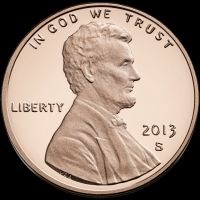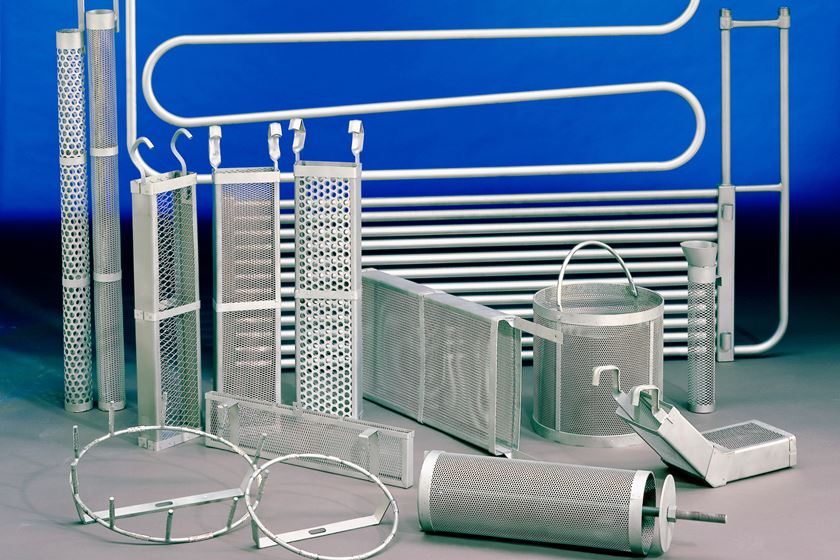Zinc - An Important Nutrient
Once again, long-time AESF/NASF contributor Jack Dini provides another of his highly regarded and fascinating writings, this time on the benefits of zinc.
#nasf
by Jack Dini
Livermore, California, USA
Editor's Note: Jack Dini is back with another interesting article, this time on zinc. A printable version of this article can be accessed HERE.
Featured Content

Wikipedia Public Domain by TMg
Electrodeposited zinc is used primarily for the protection of steel from corrosion. Thickness usually ranges from 4 to greater than 25 μm (0.15 mil to greater than 1 mil) depending upon the anticipated applications and environments.1
An alternate for providing zinc protection is hot dip galvanizing (shown above), where parts are immersed in a molten bath of zinc at a temperature around 449°C (840°F).

Courtesy Clipartmax.com
In terms of the human body, zinc is ubiquitous and facilitates many functions that are essential for preserving life. It plays a vital role in maintaining optimal childhood growth and in ensuring a healthy immune system. Zinc also helps limit inflammation and oxidative stress in our bodies, which are associated with the onset of chronic cardiovascular diseases and cancers.2
Zinc had been identified as one of the most important essential trace metals in human nutrition and lifestyle. It is not only a vital element in various physiological processes, it is also important in the prevention of many diseases. The adult body contains about two to three grams of zinc. It is found in organs, tissues, bones, fluids and cells. A number of vital human physiological processes have a relationship with zinc including: the brain, cardiovascular system, liver, pregnancy, diabetes, endocrine system, healing and pneumonia.3 One study shows that a modest 4 milligrams of extra zinc a day in the diet can have a profound impact on cellular health that helps fight infections and diseases.4
The recommended daily allowance for zinc ranges from 8 to 11 milligrams for most adults. Red meat and poultry provide the majority of zinc in the American diet. Other food sources include beans, nuts, some shellfish, whole grains, fortified cereals, and dairy products. The nutrient is also available in supplement form.5
Zinc deficiency affects about 2 billion people worldwide, including an estimated 40 percent of the elderly in the United States who are also among the most likely Americans to end up in an intensive care unit.5 Severe zinc deficiency will cause your skin to fall off, your ability to taste to diminish, and your immune system to function less well. Thus, zinc supports skin and immune health as well as taste function.6
Zinc saves lives. In developing countries, diarrhea is a major cause of death among children under 5. But cheap zinc tablets can help stave off deadly dehydration. Combined with oral rehydration salts, it can prevent 90 percent of those fatalities.
It saves crops. Zinc-enriched fertilizers boosted wheat and barley production in Turkey by 55%.4

Public Domain
Zinc in pennies
Pennies were 95% copper until 1982 when the mint changed the composition to 97.5% zinc. If it had not done so, a penny would be worth about 2 cents just for the copper, so people would hoard them for the 'melt value.' You will be able to tell that the new pennies are considerably lighter, 3.1 grams for the copper penny and 2.5 grams for the zinc penny. This is because of the relative density of the two metals, 8.96 for the copper penny and 7.13 g/ml for the zinc penny. Copper is 25% denser than zinc; the copper penny weighs 24% more than the zinc penny.7
Zinc and the common cold

Wikimedia CC0 1.0 Universal Public Domain
Vitamin C may not do a thing to prevent or treat the common cold, but the other widely-used cold supplement, zinc, may actually be worth taking. A mineral that's involved in many different aspects of your cellular metabolism, zinc appears to interfere with the replication of rhinoviruses, the microbes that cause the common cold.8
Studies from the last several years show that some supplements containing zinc can help shorten the duration of cold symptoms by up to 40%, depending on the amount of the mineral in each dose and what it's combined with.9 This has been borne out in a number of times.
A 2011 review that considered 13 therapeutic studies in which patients who'd just come down with the common cold were given zinc supplements. Compared to those who'd been given a placebo, the mineral significantly reduced the duration of the cold and also made symptoms less severe.8
In 2017, a team of researchers performed a meta-analysis on three small randomized trials. Combined, the analysis examined 102 participants taking zinc and 97 taking a placebo. Results suggest that zinc may be even more beneficial than researchers previously estimated. By day 5, 70% of the people taking zinc lozenges had recovered from the common cold compared to only 27% of people taking the placebo.10
The authors concluded that zinc lozenges may triple the recovery rate for people suffering from the common cold. The best part is that daily supplementation isn't necessary. When you feel a cold coming on, start popping zinc lozenges. That will do much more for you than vitamin C or Echinacea.11
In another study the mean common cold duration was 33% shorter for the zinc groups of the seven included trials. In five trials that used zinc doses of 80-92 mg/day, common cold duration was reduced by 33% and two trials that used zinc doses of 192-207 mg/day found an effect of 35%. The difference between the high dose and low dose zinc trials was not significant. So there is no evidence that zinc doses over 100 mg/day might lead to greater efficacy for treating colds.12
Also, researcher Harri Hermilä cautions that it's quite difficult to instruct patients. That's because zinc cold formulations sold at drugstores often contain multiple ingredients that can undercut zinc's effectiveness. For instance, the lozenges should not contain citric acid, Hermila says. This is because it binds with the zinc in a way that keeps the mineral from being released. In addition, he says the mechanism of action is not well understood, so scientists can't say exactly how it works.
So, do check each package's list of ingredients and the size of the zinc dose, the scientists recommend, because not all products are going to help.
References
1. W.H. Safranek, “Zinc,” in The Properties of Electrodeposited Metals and Alloys, 2nd Edition, W. H. Safranek, Editor, American Electroplaters and Surface Finishers Society, Winter Park, FL; NASF, Washington, DC (1986).
2. “Zinc eaten at levels found in biofortified crops reduces wear and tear on DNA,” Science Daily, January 3, 2017; https://www.sciencedaily.com/releases/2017/01/170103084620.htm (last accessed 09/24/21).
3. Kuljeet Kaur, et al., “Zinc” the metal of life,” Comprehensive Reviews in Food Science and Food Safety, 13 (4), 358 (2014); https://onlinelibrary.wiley.com/doi/full/10.1111/1541-4337.12067 (last accessed 09/24/21).
4. Bryan Lufkin, “3 smart things about zinc,” Wired, December 3, 2013; https://www.wired.com/2013/12/3-smart-things-about-zinc/ (last accessed 09/24/21).
5. Daren Knoell, “Zinc helps against infection by tapping brakes in immune response,” Ohio State University, Science Daily, February 7, 2013; https://www.sciencedaily.com/releases/2013/02/130207131344.htm (last accessed 09/24/21).
6. David Seres, “The danger of loosely regulated supplements,” acsh.org, March 30, 2017; https://www.acsh.org/news/2017/03/30/danger-loosely-regulated-supplements-11070 (last accessed 09/24/21).
7. Josh Bloom. “Zinc: a bipolar element,” acsh.org, March 14, 2018; https://www.acsh.org/news/2018/03/14/zinc-bipolar-element-12684 (last accessed 09/24/21).
8. Joseph Stromberg, “Five vitamins and supplements that might actually be worth taking,” Smithsonian, February 14, 2014; https://www.smithsonianmag.com/science-nature/five-vitamins-and-supplements-are-actually-worth-taking-180949735/ (last accessed 09/24/21).
9. Allison Aubrey, “Taking zinc can shorten your cold. Thank a 91 year old scientist for the discovery,” National Public Radio, February 10, 2020; https://www.npr.org/sections/health-shots/2020/02/10/803886479/taking-zinc-can-shorten-your-cold-thank-a-91-year-old-scientist-for-the-discover (last accessed 09/24/21).
10. Alex Berezow, “Zinc lozenges may triple recovery rate from colds,” acsh.org, October 13, 2017; https://www.acsh.org/news/2017/10/13/zinc-lozenges-may-triple-recovery-rate-colds-11959 (last accessed 09/24/21).
11. Harri Hemilä, et al., “Zinc Acetate Lozenges May Improve the Recovery Rate of Common Cold Patients: An Individual Patient Data Meta-Analysis,” Open Forum Infectious Diseases, 4 (2) (Spring 2017); pubmed.gov, https://pubmed.ncbi.nlm.nih.gov/28480298/ (last accessed 09/24/21).
12. Harri Hemilä, “Zinc lozenges and the common cold: a meta-analysis comparing zinc acetate and zinc gluconate, and the role of zinc dosage,” JRSM Open, 8 (5), May 2, 2017; pubmed.gov, https://pubmed.ncbi.nlm.nih.gov/28515951/ (last accessed 09/24/21).
About the author

Jack Dini earned a Bachelor of Metallurgical Engineering degree from Cleveland State University and began his career in the 1950s with Cleveland Supply Co. (now Pavco). He spent a few years at Republic Steel's research center and Battelle Columbus Laboratories. In 1962, he joined Sandia Laboratories, Livermore, CA, where he was involved with electrodeposition projects for 18 years before moving to Lawrence Livermore (LLNL) in 1980. He was section leader, fabrication processes. Responsibilities included direction of activities in five groups: electroplating and metal finishing, vacuum processes, metal fabrication, plastics and optics.
Mr. Dini is a prolific scientist. He is the author or coauthor of some 125 technical papers and, while many researchers are content to specialize in one or two fields, he made significant contributions to more than half a dozen disciplines in surface finishing. He is the author of two books, Electrodeposition- The Materials Science of Coatings and Substrates, and Challenging Environmental Mythology: Wrestling Zeus. The scientific community is fortunate that he carefully documented his work, sharing it with others around the world. It includes plating uncommon metals, alloy plating, printed circuits, chemical milling, electrojoining and gathering electrochemical/property data.
RELATED CONTENT
-
Hybrid Sol-Gel Coatings in Surface Engineering
A look at the use of modified sol-gel polymer films and hybrid system coatings, as well as the methodologies for evaluating the mechanical properties of the coatings.
-
Nanostructure of the Anodic and Nanomaterials Sol-Gel Based Materials Application: Advances in Surface Engineering
Porous alumina can be fabricated electrochemically through anodic oxidation of aluminum. This paper reviews sol-gel chemistry and applications, which also offers unusual nanoporous microstructures. The ability to control pore chemistry at different scales and geometries, provides excellent bioactivity, enabling the entrapment of biologically active molecules and their controllable release for therapeutic and medical applications.
-
The Adhesion of Electrodeposits to Plastics
The 1966 Carl E. Huessner Gold Medal Award was given to Dr. Edward Saubestre and co-workers for Best Paper appearing in Plating in 1965, and their paper is republished here in a series on the AES/AESF/NASF Best Paper Awards. This paper is a comprehensive treatise on the Jacquet peel test, a primary test method for determining adhesion on plated plastics.


















